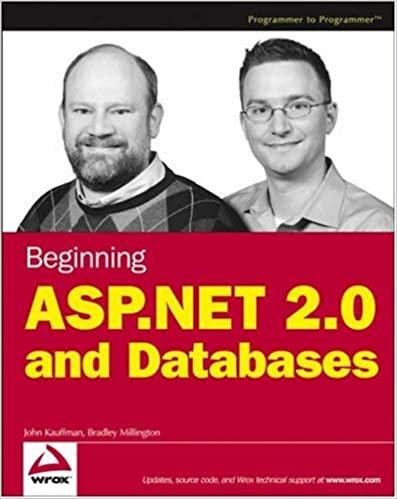Question
The State Patrol Ticket-Processing SystemThe purpose of the State Patrol ticket-processing system is to record moving violations, keep records of the fines paid by drivers
The State Patrol Ticket-Processing SystemThe purpose of the State Patrol ticket-processing system is to record moving violations, keep records of the fines paid by drivers when they plead guilty or are found guilty of moving violations, and notify the court that a warrant for arrest should be issued when such fines are not paid in a timely manner. A separate State Patrol system records accidents and the verification of financial responsibility (insurance). But a third system uses ticket and accident records to produce driving record reports for insurance companies. Finally, a fourth system issues, renews, or suspends drivers licenses. These four systems are obviously integrated, in that they share access to the same database; otherwise, they are operated separately by different departments of the State Patrol.When an officer gives a ticket to a driver, a copy of the ticket is turned in and entered into the system. A new ticket record is created, and relationships to the correct driver, officer, and court are established in the database. If the driver pleads guilty, he or she mails in the fine in a preprinted envelope with the ticket number on it. In some cases, the driver claims innocence and wants a court date. When the envelope is returned without a check and the trial request box has an X in it, the system does the following: notes the plea on the ticket record; looks up driver, ticket, and officer information; and sends a ticket details report to the appropriate court. A trial date questionnaire form is also produced at the same time and is mailed to the driver. The instructions on the questionnaire tell the driver to fill in convenient dates and mail the questionnaire directly to the court. Upon receiving this information, the court schedules a trial date and notifies the driver of the date and time.When the trial is completed, the court sends the verdict to the ticketing system. The verdict and trial date are recorded for the ticket. If the verdict is innocent, the system that produces driving record reports for insurance companies will ignore the ticket. If the verdict is guilty, the court gives the driver another envelope with the ticket number on it for mailing in the fine.If the driver fails to pay the fine within the required period, the ticket-processing system produces a warrant request notice and sends it to the court. This happens if the driver does not return the original envelope within two weeks, or does not return the court-supplied envelope within two weeks of the trial date. What happens next is in the hands of the court. Sometimes, the court requests that the drivers license be suspended, and the system that processes drivers licenses handles the suspension.
1- To what events must the ticket-processing system respond? List each event, the type of event, the resulting use case, and the actor(s). Think carefully about who the actors are. Does the officer directly enter the ticket into the system? Or does a state patrol clerk do it when the paper ticket is received from the officer? The existing system uses paper forms, so for now assume the state patrol clerk enters all of the information. A new system would use the same use cases, but opportunities for efficiency and accuracy would lead to changes in who the actors are.
2- Write a brief use case description for each use case.
3- Draw a use case diagram for the ticket-processing system assuming the actors are based on your answers in question 1 (the existing system as described).
Step by Step Solution
There are 3 Steps involved in it
Step: 1

Get Instant Access to Expert-Tailored Solutions
See step-by-step solutions with expert insights and AI powered tools for academic success
Step: 2

Step: 3

Ace Your Homework with AI
Get the answers you need in no time with our AI-driven, step-by-step assistance
Get Started


